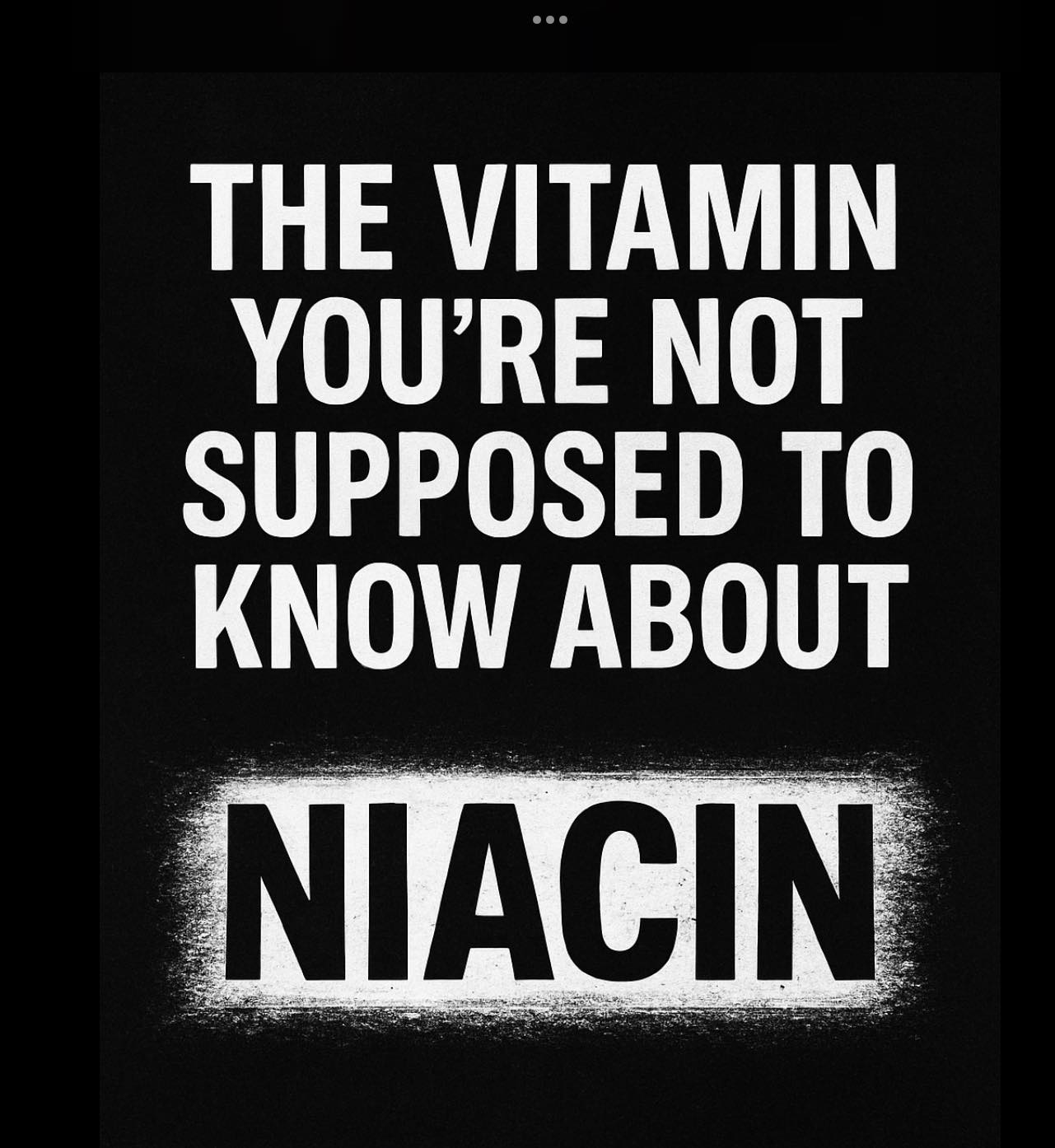🌟 Is one vitamin being ignored by modern medicine? 🌟
💊 Niacin: The Real Story doesn’t whisper—it shouts. If you’ve never looked into high-dose niacin (vitamin B3), you’re about to rethink what’s possible for your health.
Why Niacin?
According to Niacin: The Real Story (2nd ed.) by Abram Hoffer, Andrew W. Saul, and Harold D. Foster, niacin is a small molecule with an outsized footprint—powering hundreds of cellular reactions tied to energy, mood, and resilience. The authors view it through an orthomolecular lens: use nutrients natural to the body, in amounts tailored to individual need.
What Niacin Can Help With
Hoffer and colleagues spent decades documenting outcomes. Highlights from the book:
- ✅ Cholesterol support (nicotinic acid form), alongside improvements in triglycerides and HDL/LDL balance
- ✅ Mood, calm, and anxiety relief
- ✅ Addiction recovery support (including alcohol)
- ✅ Cognitive and behavioral function—discussed in contexts like schizophrenia, depression, ADHD, learning and behavioral disorders
- ✅ Sleep quality and steady energy
…and an eye-opening section the authors call “Other Clinical Conditions That Respond to Niacin,” which includes:
aging, allergies, Alzheimer’s disease, cataracts, cancer, cholera & diarrhea, detoxification, erectile dysfunction, epidermolysis bullosa, fatigue, Hartnup disease, Huntington’s disease, migraine headache, multiple sclerosis, nephritis, obesity, Parkinsonism, pemphigus, and more.
The point isn’t that niacin is magic; it’s that the authors repeatedly found it clinically useful—often as a low-cost, accessible lever worth considering within a thoughtful plan.
Things You Probably Didn’t Know About Niacin
- Form = Function. The book distinguishes nicotinic acid (the classic flushing form linked to lipid effects) from niacinamide (no-flush; featured prominently in joint mobility and behavioral applications, drawing on William Kaufman, MD, PhD).
- The Flush Is a Feature. That warm, red “niacin flush”? The authors frame it as expected, short-lived, and often diminishing with consistent use—especially with immediate-release niacin.
- Dose Style Matters. The authors favor divided doses of immediate-release nicotinic acid when appropriate, with step-up titration to find a personal sweet spot.
- It’s Not Just Deficiency. Beyond pellagra, the book argues many modern issues reflect multi-nutrient shortfalls; niacin often moves the needle when other levers fall short.
- “Flush-Free” ≠ Same Thing. Inositol hexanicotinate may avoid flushing—but the authors note it doesn’t behave the same in the body as true nicotinic acid.
How the Authors Suggest Approaching It
- Start low, go slow, and use divided doses (for those using nicotinic acid).
- Pick the form based on the goal (e.g., nicotinic acid vs. niacinamide).
- Pay attention to your body’s feedback and be consistent.
The book dedicates entire chapters to how to take niacin and safety—so readers can be informed and intentional.
Why You Haven’t Heard More
Because this story ruffles feathers. Niacin isn’t a new designer drug—it’s an old, inexpensive vitamin. You can’t patent it. It doesn’t fit neatly inside high-margin frameworks. Niacin: The Real Story challenges the status quo with cases, protocols, and outcomes you won’t see on a prescription pad.
Ready to Dive Deeper?
If you’re navigating mental health challenges, cholesterol concerns, chronic fatigue, or simply want an affordable, evidence-discussed tool in your kit, this book is a powerful place to start.
Book & Purchase Link
This post summarizes the authors’ claims and clinical experience for educational purposes and is not medical advice.
This post contains an affiliate link. As an Amazon Associate I earn commission from qualifying purchases. This does not affect the price that you pay for the item. Opinions and recommendations are based 100% on my own experience.
